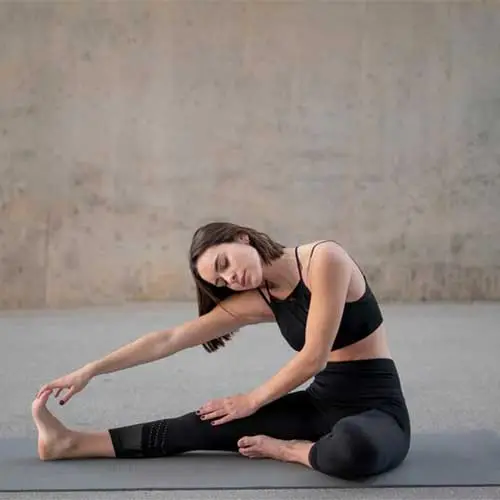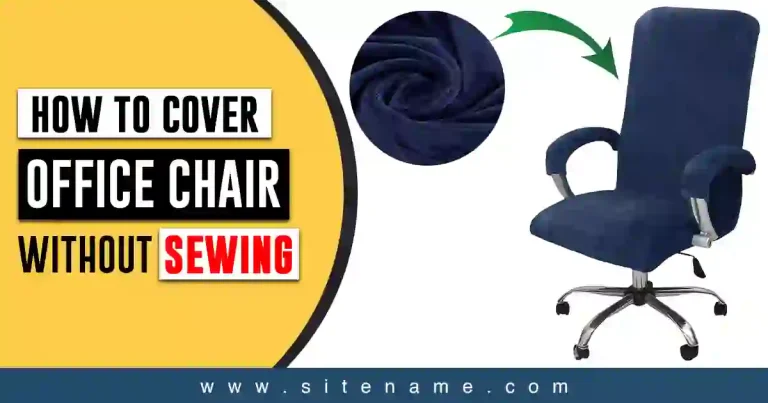How to Relieve Hip Pain When Sitting Indian Style
Sitting in Indian style has a lot of benefits especially when it comes to lower back and hip muscles. But a lot of people, especially adults, feel difficulty because they experience hip pain when sitting Indian style. The causes of this pain include hip immobility, stiffness, pinching of nerves, and arthritis.
It can also be due to wrong sitting posture, arthritis, or nerve pinching. But the good news is that hip pain due to sitting can be cured by simple exercises and lifestyle changes. This article explains plenty of solutions to your problem.
What is Hip Pain?
The pain or discomfort felt in or near the hip joint area is referred to as hip pain. The pain in this area also affects muscles, tendons, ligaments, and nerves around the hip area. Hip pain can have different meanings for different people depending on where it occurs inside or around the hip area.
The outside of your hip, upper thigh, or buttock may hurt when you sit cross-legged whereas the inside hip area suffers from pain when sitting normally. In some cases, lower back discomfort can radiate to the hip when seated, a condition known as “referred pain.”
Causes of Hip Pain When Sitting Indian Style
A person can experience severe to mild hip pain while sitting in Indian style for several reasons. Some of the reasons are explained below:
Poor body mobility:
A person who has limited body movement will likely experience some sort of hip pain while sitting cross-legged. A sedentary lifestyle can make the hip flexor muscles not only immobile but also short and weak. This condition is sometimes also referred to as “adaptive shortening”. In this situation, the body’s muscles become not so used to any strain. The added tension by sitting Indian style then manifests itself in the form of back or hip pain.
Tight hips:
A person must have a full external hip rotation range or the hip must be able to turn out, to sit comfortably in this cross-legged position. If there is tightness in the muscles that connect to the leg, along with a restricted range of motion in your hip joint, then you will probably have difficulty sitting in Indian style.
Pinching of nerves:
Long-term sittings can lead to pinching of nerves, often known as radiculopathy in medicine. Stretching, compression, or constriction of a nerve or a bundle of nerves can cause pain. This pinching can occur in the hip region while sitting in Indian style. In this case, the discomfort may spread to the groin, thigh, buttocks, and hip. Additionally, one might also feel numbness or tingling in the upper legs.
Increased pressure on one hip:
Sitting on an uneven surface that elevates the pelvis on one side can increase pressure on one side and cause hip pain. Sitting on a soft cushion cross-legged that tilts the hip on one side can also cause hip pain.
Arthritis:
Arthritis is a typical cause of hip pain while sitting Indian style. The protecting cartilage in your hip joints can deteriorate due to different types of arthritis. Inflammation and unpleasant friction may result from it. Because sitting in Indian style entails bending your hip joints, this causes severe hip pain.
Remedies for Pain When Sitting Indian Style
If you’re wondering how to stop hip pain when sitting, you should know that the appropriate course of action depends on the underlying problem. You might not even require treatment in some circumstances, but in some extreme cases, professional physiotherapy might be required. The following are some typical treatment methods:
Take medication:
Pain is most often the inflammation of bones, muscles, or joints. Taking an over-the-counter anti-inflammatory medicine can instantly relieve hip pain. Hip discomfort can be temporarily relieved by painkillers such as ibuprofen (Advil, Motrin), naproxen (Aleve), and acetaminophen (Tylenol). Based on your medical history, it’s critical to confirm that you can use these medications safely.
Use creams or balms:
Hip discomfort that arises due to sitting in Indian style can be relieved by the use of hip creams, balms, and gels. You just have to gently rub it on the area of pain. While some lotions and gels temporarily reduce inflammation in the sore region, others operate by numbing the muscles and thus reduce the pain sensation.
Take physical therapy:
Exercise can strengthen the muscles around your hips, relieve stress, and keep your joints lubricated. A physical therapist can give the right guidance on hip flexibility and strength exercises. Developing core muscles in the back and abdomen can help relieve strain if you are sitting in the wrong posture.
Heat or ice application:
If your hip pain while sitting Indian style is due to an injury, such as tendinitis, cold therapy can help reduce inflammation. Heat might aid in promoting relaxation if you suffer from osteoarthritis or another such chronic ailment, so you should try out both options and see which one you feel more comfortable in. You’ll typically have an intuitive sense of which one feels the best for you.
Gentle stretching:
Hip stiffness can be reduced with stretching exercises. It can therefore aid in reducing hip pain while sitting cross-legged. Following are a few stretches for hip pain:

- Stretch your lower back and hips: Lay flat on your back and extend your legs. Make sure your neck stays in contact with the floor while lowering your sight to the chest. Draw your knees towards your shoulders by bending both and enclosing them by arms. As you exhale, draw your knees up to your chest. Inhale deeply. Hold this posture while inhaling normally for 20 to 30 seconds.
- Hip rotation: Lay on your back flat. Gently bending your knees, bring them up to your torso. Maintain a flat foot position. Rotate your legs slightly to the left bringing them to the ground. While keeping your shoulders pressed into the ground, turn your head to the right. For 20–30 seconds, maintain the position. Return to the starting position gradually. On the other leg side, repeat.
Tips to Prevent Pain When You’re Sitting Indian Style
Messaging: Messaging regularly while sitting increases the blood flow to the tissues, releases endorphins, and produces a heating sensation that prevents the pain that a person might experience.
Sit on an even surface: Do not sit Indian style on an even surface. Avoid sitting with a wallet or money in your back pocket. Both hips should be equal to minimize the chances of pain while sitting cross-legged.
Move frequently: Try to change your sitting position frequently or get up and move around a little. Moving frequently keeps the hip joint in motion and prevents its freezing. This activity though seems little can drastically prevent hip and joint pain.
Use lumbar support: Use additional back or seat support to improve your posture while sitting. Your spine and hips can be properly aligned with the assistance of a firm cushion or foam behind your spine.
Remain hydrated: Your general health, particularly the condition of your joints, is greatly influenced by your level of hydration. We all have fluid in our joints that helps in keeping them lubricated. Also, if you keep yourself hydrated throughout the day, that’s also helpful and naturally, the more water you consume, the more frequently you will need to get up to refill your glass and, most likely, go to the toilet. Although they may not seem like much, those tiny things can have a significant impact on hip discomfort.
Avoid too hard or too soft surfaces: A bed or sofa should not be used for extended periods of sitting especially for Indian-style sitting. Such surfaces may cause your hips to descend too much, which may result in pain or improper alignment. Also avoid too hard surfaces like wooden chairs, benches, or stools.
Maintain your body weight: Carrying extra weight beyond your body’s mass Index can cause pain while sitting. Start an exercise program and a balanced diet to get in shape. This eases pressure on the hips. For those with osteoarthritis, weight loss is very crucial.
Practice regular exercise: Try to exercise regularly even on normal days so that you do not experience hip stiffness while sitting Indian Style. The best exercises in this matter are Hamstring stretch, Figure four Piriformis stretch posterior pelvic tilt, and standing hip flexor stretch.
Bottom Line!
Hip pain while sitting cross-legged is a common problem worldwide with a range of possible causes, from bad posture to underlying medical issues. It is usually not a serious problem and can be treated with stretching. Relieving hip pain is based on the severity and differs from individual to individual. An active lifestyle can let you get rid of this discomfort and hence will enable you to reap the health benefits of sitting in Indian style. It is, however, better to consult a physiotherapist in case the pain goes beyond your pain threshold.







